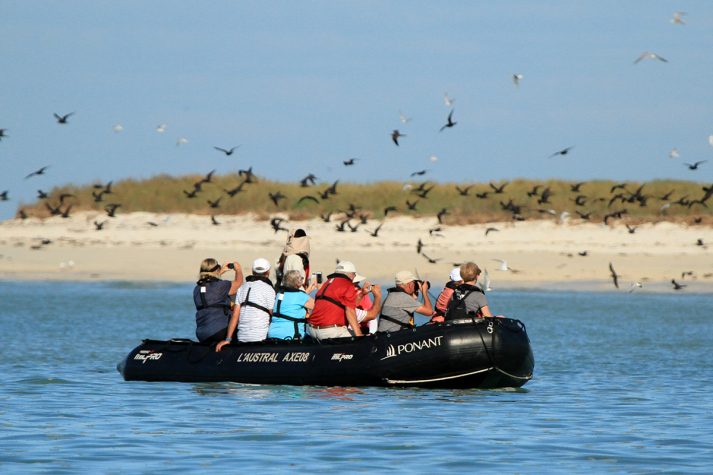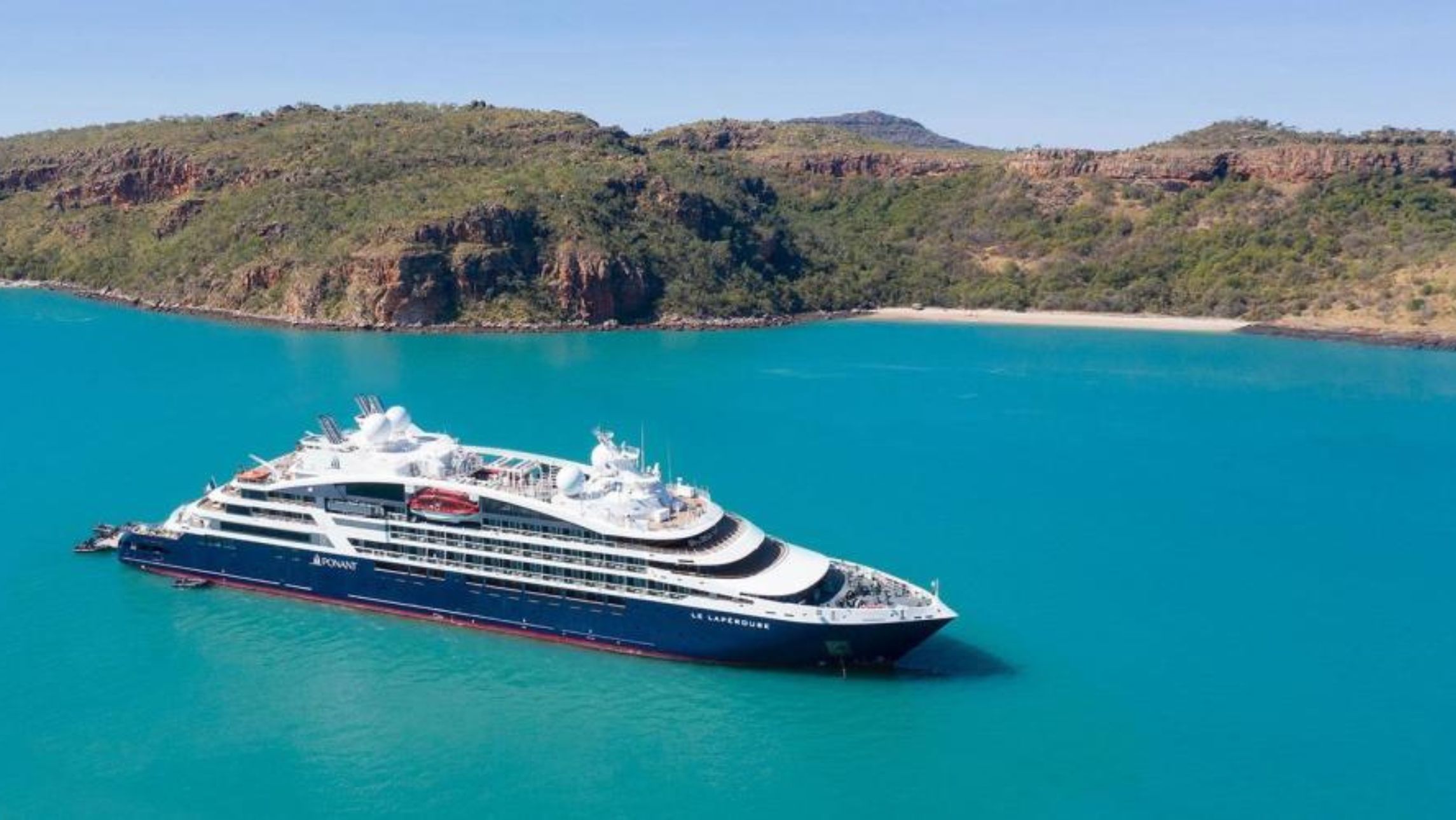Australia’s Kimberley coast has a magnetic effect. Once you’ve visited, you’ll long to return to discover – what lies in the next bay, what awaits at the end of the next gorge or what secrets are revealed on the walls in the next cave. Ponant’s expedition leader, Mick Fogg shares what he discovered.
Often referred to as the “Antarctica of the tropics” it’s the pristine environment, massive scale and remoteness that gives rise to the comparison. The ancient landscape is the epitome of a sunburnt country, the vast plains and rugged red sandstone gorges are quintessentially Australian and like nowhere else.
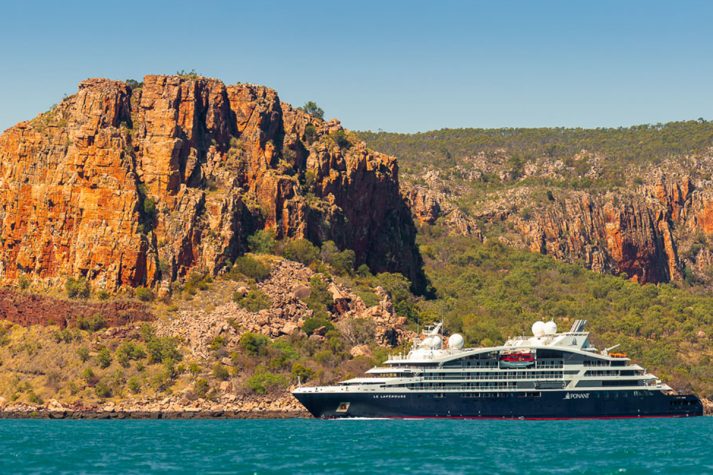 The Kimberley season is from April to September where you can watch the dramatic landscape change and wildlife. At the start of the season the twin waterfalls of King George are at their peak and the green foliage contrasts sharply with the rugged red rocks, creating a picture postcard setting. As the months cool down the water slowly recedes, the wildlife comes alive. It is an ideal time to spot that most ancient of reptiles, the crocodile. As the waterfalls slowly dry up, the largest migration of humpback whales in the world makes its way along the Kimberley coast. From mid-July these majestic leviathans are regularly seen from guest balconies and open decks, with close encounters by our fleet of zodiacs a highlight for the lucky few. For bird enthusiasts, the migration of many species of waders is concentrated toward the end of the winter months and the start of spring. So, the question is always asked, is there a best time to see the Kimberley? If you asked each one of the thirteen members of Ponant’s expedition team that accompany guests on each voyage, I’m sure they’d each give a different response. My advice, come at a time that suits you best.
The Kimberley season is from April to September where you can watch the dramatic landscape change and wildlife. At the start of the season the twin waterfalls of King George are at their peak and the green foliage contrasts sharply with the rugged red rocks, creating a picture postcard setting. As the months cool down the water slowly recedes, the wildlife comes alive. It is an ideal time to spot that most ancient of reptiles, the crocodile. As the waterfalls slowly dry up, the largest migration of humpback whales in the world makes its way along the Kimberley coast. From mid-July these majestic leviathans are regularly seen from guest balconies and open decks, with close encounters by our fleet of zodiacs a highlight for the lucky few. For bird enthusiasts, the migration of many species of waders is concentrated toward the end of the winter months and the start of spring. So, the question is always asked, is there a best time to see the Kimberley? If you asked each one of the thirteen members of Ponant’s expedition team that accompany guests on each voyage, I’m sure they’d each give a different response. My advice, come at a time that suits you best.
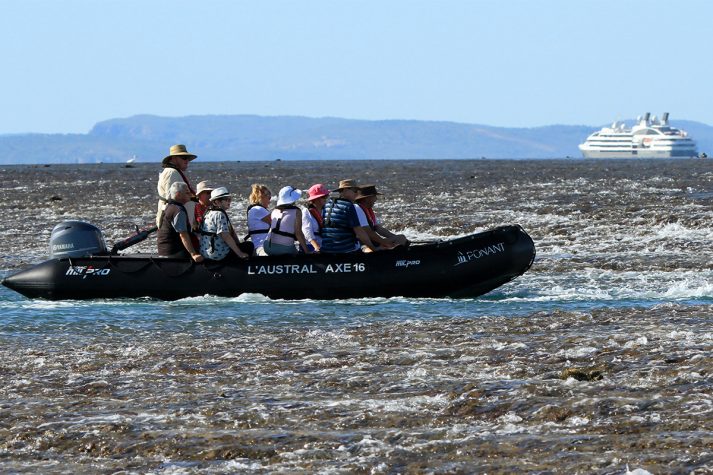
It’s almost impossible to identify a favourite location along the coast. It’s what makes it such a remarkable voyage. Each destination is unique and has its own character that changes daily, driven by the largest tides in Australia. However, the ancient stories written in stone depicting traditions and legends are timeless. The aboriginal rock art heritage of the Kimberley is on a scale second to none, with in excess of a million sites. Here you can find the greatest collection of outdoor galleries in the world. I have worked with the traditional custodians of the land for more than ten years, watching the wonder in the faces of our guests as they bring to life the images drawn by their ancestors.
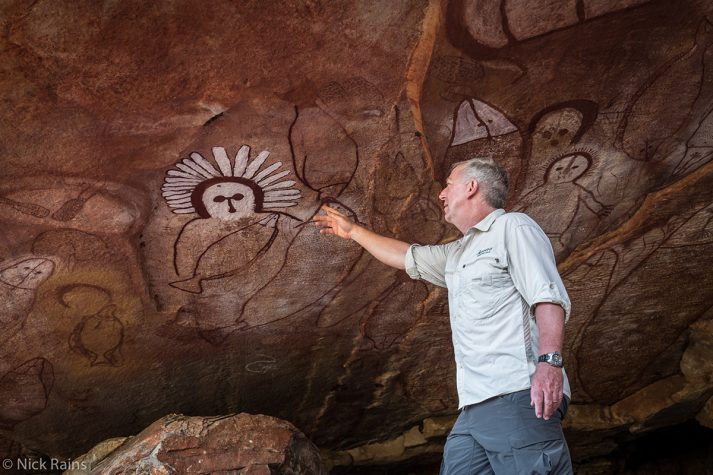
The most ancient of rock art styles, Gwion Gwion, is a minimum of 12,000 years old and as the dating technology improves it continues to reveal paintings of an even earlier origin. During our Kimberley Coast expedition magnificent examples of Gwion Gwion and Wandjina style rock art can be seen at Ngula (Jar Island), Warrabii (Swift Bay) and Ngumburi (Raft Point).
The spectacular 90-meter high sandstone cliffs of the King George Gorge are a definite highlight. The colours and textures of the gorge change with the light as you travel further up the river creating a continual changing wallpaper of passing scenery that is simply stunning.
The Hunter-Roe river system is lined with ancient rainforest pockets, pristine mangroves and mosaic sandstone cliffs. They are amongst the most pristine mangrove forests in the world, supporting a rich and diverse fauna. Our fleet of zodiacs, piloted by experienced and knowledgeable guides, are a perfect way to experience the diversity of life at close quarters.
There are many reminders of the bygone era of exploration. At a high tide, on a warm September afternoon in 1820, Phillip Parker King ran ‘His Majesty’s Cutter Mermaid’ onto the sands of Careening Bay for urgent repairs. During the ten days that the crew worked hard to re-float the vessel, the ship’s carpenter carved the name of the vessel and the year into a nearby boab tree. The tree is now 3 metres wide and National Heritage listed.
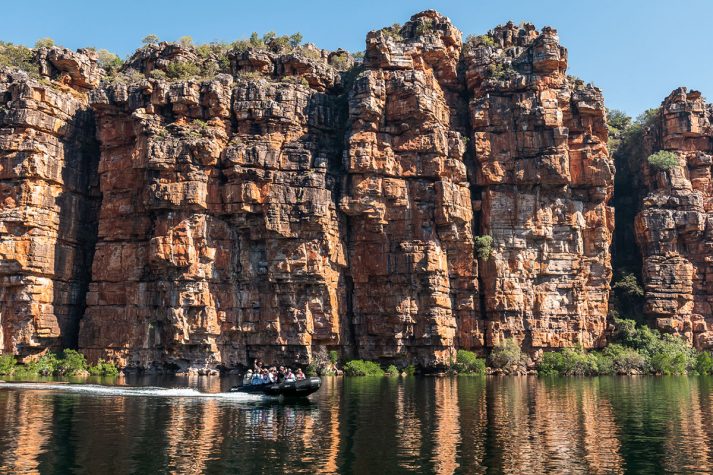
The “Horizontal Waterfalls” are an iconic location and a great example of the massive tidal movements the Kimberley coast is renowned for. For me, the most amazing tidal phenomenon is Montgomery Reef. Having been lucky to visit ‘Monty’ more than 100 times I still cannot adequately describe this natural wonder, words simply don’t do it justice, you have to see it at least once in your lifetime. Imagine 400 square kilometres of reef emerging from the ocean before your eyes. First, the ocean appears to bend, then the edge of the reef appears, and the water starts to run. As the tide drops further, raging torrents of water cascade off the reef forming rivers that stretch across the sea. There are days when the tide is dropping more than three centimetres a minute as the reef rises from the ocean, it is mother nature at her best.
Another remarkable aspect of the Kimberley coast is the birdlife. As you travel along the coast there is a noticeable lack of birdlife, yet just offshore, many islands are teeming with resident wading birds and migratory shorebirds. Places like the Lacepede Islands, only 25 kilometres from the coast, are home to the world’s largest breeding colony of Brown Boobies, over 20,000 roseate terns, 20,000 common Noddies, 3,000 bridled terns and a multitude of other species have also been recorded. It is a stark contrast to the barren cliffs and gorges of the coast.
It is the diversity and pristine nature of the destinations that make a Kimberley coastal expedition a truly memorable experience. From Ancient Landscapes, ancient cultures and ancient reptiles to spectacular scenery, unique tidal phenomena and amazing wildlife a Kimberley coast expedition has something for even the most ardent traveller.
Main picture of Mick Fogg at Swift Bay was taken by Tony Redhead.
